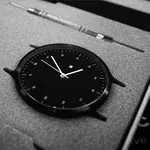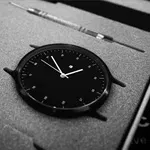Tourbillons Explained: Are They Worth the Premium?
In the world of horology, few features evoke as much admiration and intrigue as the tourbillon. This intricate mechanism, which was originally designed to improve the accuracy of pocket watches by counteracting the effects of gravity, has since become a symbol of luxury and craftsmanship in modern timepieces. But the question remains: are tourbillons worth the premium price tag they often carry?
To understand the value of a tourbillon, it's essential to delve into its history and mechanics. Invented in 1795 by Abraham-Louis Breguet, the tourbillon was a groundbreaking innovation at the time. By placing the escapement and balance wheel in a rotating cage, Breguet aimed to mitigate the positional errors caused by gravity, especially in pocket watches that were frequently held in different orientations. While this feature was revolutionary in the 18th century, advancements in technology and materials have significantly improved watch accuracy since then, leading many to question the practical necessity of a tourbillon in contemporary timepieces.
From a technical perspective, the tourbillon is a marvel of engineering. Its construction demands exceptional craftsmanship, often requiring hundreds of tiny components to work in perfect harmony. Creating a tourbillon involves not just precision but also a level of artistry that elevates it to a form of wearable art. The allure of watching the mesmerizing rotation of the tourbillon cage is a sight to behold, drawing collectors and enthusiasts alike.
However, the real question arises when considering the value proposition of tourbillons. They often come with a hefty price tag, sometimes costing tens of thousands of dollars or more. For many watch enthusiasts, the appeal of a tourbillon lies not just in its functionality but in its prestige. Owning a watch with a tourbillon can be seen as a status symbol, showcasing one’s appreciation for horological craftsmanship and innovation.
That said, the practicality of a tourbillon in everyday use is often debated. Most modern wristwatches can maintain excellent accuracy without the need for such complex mechanisms. In fact, many high-end watches that do not feature a tourbillon still boast exceptional precision and reliability. This leads to the argument that the premium associated with tourbillons is more about exclusivity and artistry than necessity.
For collectors and enthusiasts, the decision to invest in a tourbillon often hinges on personal values. If one places a high premium on craftsmanship, innovation, and the heritage of watchmaking, then a tourbillon can be a worthwhile addition to a collection. For others, the focus may be more on functionality and precision, making a non-tourbillon watch a more sensible choice.
Ultimately, the question of whether tourbillons are worth the premium is subjective. They represent a blend of art, science, and history, appealing to those who appreciate the finer things in life. For some, the allure of owning a piece of horological history is worth every penny, while for others, the focus may remain on practicality and performance.
In the end, whether you’re drawn to the mesmerizing dance of a tourbillon or prefer a simpler, more functional timepiece, the world of luxury watches offers something for everyone. The beauty of horology lies in its diversity, allowing enthusiasts to choose pieces that resonate with their individual tastes and values.









